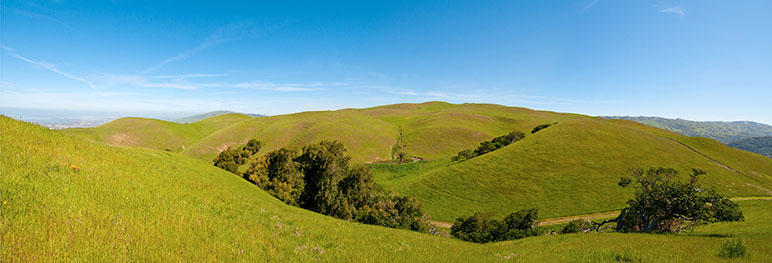Santa Clara Valley is the fastest-growing region in California, with a population projected to increase by 36 percent over the next five years. That makes untouched land all the more valuable—to developers and the public alike.
To prevent important agricultural lands, wildlife, urban open spaces and hillsides from getting paved over by development, the Santa Clara County Open Space Authority wants to buy more land to set aside as permanent preserves. But soaring real estate prices limit how much the agency can buy. Measure Q, a countywide $24 annual parcel tax, would give the authority another $7.9 million a year for the next 15 years to expand its network of open spaces and preserve the land it already oversees.
The added cash would double the agency’s size from 16,000 to 30,000 acres and open up to the public more land in the east San Jose hills, Henry Coe State Park and around the Calero Reservoir. It would triple the number of trails for hiking, biking and horseback riding from 19 to 60 miles.
A 5-percent cap would be placed on administrative costs, which might allow the authority to add to its 20-member staff. Forty-seven percent of the $120 million would go toward land purchases. Some $30 million would go back to cities for grants to expand the number of urban open spaces. The remaining would be designated for stewardship—maintenance, trailheads, signs and other infrastructure—and to open up to the public land they already own.
Andrea MacKenzie, director of the authority, stressed the value of public open space. A study showed that the region’s undeveloped land provides up to $3.9 billion in economic benefit to the region if you account for crops, pollens, groundwater basins and other natural resources.
Current funding comes from a $12 annual parcel tax that nets $4.2 million a year—hardly enough to maintain existing land and definitely not enough to compete with private developers eyeing open space in the Coyote Valley. Perhaps most reassuring, Melissa Hippard, of the Greenbelt Alliance, assured San Jose Inside staff that none of the money would go back into the pockets of Measure Q’s organizers.
The tax increase is a small price to pay for the quality of life brought by an abundance of open space. Vote "yes" on Measure Q.
For official ballot descriptions of local measures, go to the Registrar of Voters website.


With a 1.6% growth rate, Santa Clara County will not grow by 36% in the next five year.